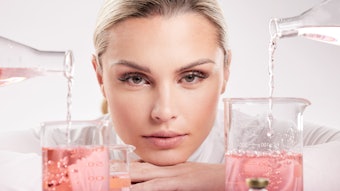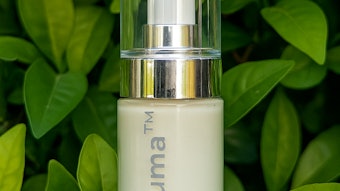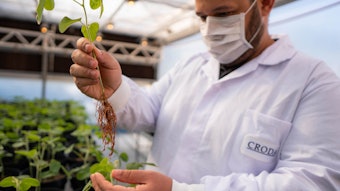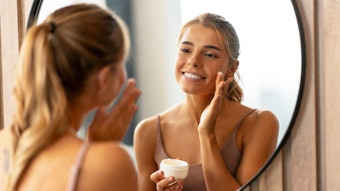- Claims remain one of the primary ways brands are grabbing the attention of consumers, and claims must be substantiated.
- Many beauty ingredient suppliers are conducting and developing more sophisticated tests to demonstrate the efficacy of ingredients and sharing that data with brands to help encourage consumers to buy.
- Efficacy tests can be helpful in product development, revealing how much of an ingredient is necessary to show tangible results for users, as well as potential ingredient substitutions.
As beauty brands race to put the latest and greatest products on the shelves in a market saturated with new innovations, consumer product testing and procedures for implementing claims substantiation protocols are topics of increasing interest. And as brands work to best competitors and differentiate their products in one way or another, supporting new ingredient claims with efficacy data is increasingly important, particularly as consumers become more educated and aware of the types of ingredients used in beauty products. “Consumers are now developing their own expectations and demands for specific claims,” says Kristen Presti, marketing manager, face care, BASF.
Brands are responding by trying to meet these consumer demands, and trying to connect on a more personal level. Ultimately, the product and formulation development process should assure that the efficacy of an active ingredient is translates to an efficacious product—with suppliers providing the ingredients that enable brands to formulate for efficacy and helping product development teams understand the testing processes required to legitimize on-pack claims.
Imperatives
Typically, bioactive ingredients are tested via cell biology, biochemistry and chemistry techniques. In its formulation laboratory, BASF is able to demonstrate both the aesthetics and the bioactive efficacy of its ingredients. The lab uses a combination of test methodologies to evaluate efficacy—typical efficacy tests evaluate antioxidant activity, anti-inflammatory activity, and collagen and elastin synthesis.
“Once we have confirmed activity via these methods, we then take the bioactives into in vivo test method protocols, which involves sensorial consumer testing or bioinstrumentation,” says Jill Litchauer, senior manager, application technology and technical services for personal care, home care and I&I, BASF. “Our formulation chemists are constantly working with a variety of our materials to optimize synergies and improve efficacy in an end formulation.”
It also is imperative to use proper scientific methodology and follow appropriate testing protocols to assure product efficacy. Depending on the mechanism and anticipated end cosmetic benefit, Sederma tests and measures efficacy through a number of in vitro and/or ex vivo tests, as well as clinical studies. In order to do so, Sederma has, in some cases, created measurement and testing tools. The Aeroflexmeter, created and patented by Sederma to enable visualization of the improvement in skin firmness, associates the contactless deformation of the skin by compressed air and its dynamic measurements by a high-frequency laser line profilometer. It was used to show and confirm the immediate firming effects of the supplier’s Dynalift ingredient, as well as the long-term firming efficacy of its Idealift ingredient, following a clinical study by panelists, according to Denise Gabriele, vice president of sales and marketing, Sederma. “In the end, however, in vivo and consumer perception study results are probably of most value to the consumer,” notes Gabriele.
BASF also has adopted some of the latest technologies and uses state-of-the-art equipment to demonstrate efficacy and substantiate claims, according to Manasi Chavan, PhD, technical service manager, BASF. BASF’s testing platform starts at the genomic level, where it tests for proof of principle via new pathways and then links those pathways to a consumer-perceivable benefit, which is proven through its clinical testing laboratory.
“A powerful way to establish efficacy in skin care is to investigate and understand specific biological pathways, so there is an increase in testing at both the genomic and proteomic level as a proof of principle, and then the efficacy of the product is confirmed through clinical testing,” explains Chavan.
Continuous Improvement
Improving results requires both an understanding of the desired end-result and knowing what factors to modify in an ingredient to produce the sought-after effect. “Ingredient modifications coupled with the right screening (in vitro) models can give an indication of which change is the best for cosmetic efficacy, and then it can be further validated through ex vivo and/or in vivo test methods,” says Sonia Dawson, marketing manager, botanicals, Croda Inc.
Using benchmarks are key to continual improvement. And it is with this in mind that Evonik Industries employs the practice of comparing its new ingredients against what is readily available in the market as well as against the most advanced emerging ingredient technologies. “We also compare efficacy to what we are already doing, trying to outdo even ourselves,” says Paul Washlock, vice president of personal care North America, Evonik Industries.
Tego Care PBS 6, an oil-in-water emulsifier for low viscous applications, is one of Evonik’s recent launches. Because the key criteria is efficiency, Evonik tested it various formulation types, including in SPF 50, insect repellent and water-soluble sunscreen—all known to be difficult formulations. In addition, the team looked at natural preservation, which introduced a low pH. “All of these give us an understanding of the robustness of the emulsifier,” says Anna Howe, applied technology manager, personal care, Evonik Industries. “And, therefore, [it] gives our customers an idea how they can place our material in their platform.”
In the testing of Tego Care PBS 6, Evonik worked to stabilize the low-viscous system, as well as performing sensory testing, including objective in vivo moisturization tests. This demonstrated other actions and benefits of the ingredient. “The emulsifier can enhance sensory attributes while improving stability so customers don’t have to add other ingredients,” Howe explains. “This is very challenging in the marketplace.
Collaboration + Cost
Developing beauty product ideas for market as quickly as possible is both a challenge and an economic necessity, but ensuring products offer the maximum benefit for the consumer is equally difficult. “Efficacy can be best delivered cost effectively by combining affordable materials with scientific acumen to create stable formulations that provide the desired end benefit,” notes BASF’s Litchauer.
“The best way to achieve these goals is through collaboration,” says Washlock. Evonik goes by the 20-20 rule, which is the efforts are worthwhile if efficacy has improved 20% or if cost can be reduced by 20%. Even with cost reduction, however, efficacy must be on par or better. “If it’s not, it’s not worth the time,” Washlock says.
New Methods
As new ingredients are developed, evolving methodologies for evaluating their efficacy are required. Suppliers sometimes must develop test methods for difficult-to-measure claims, as there are many claims for which the industry does not have standardized test methods for efficacy. Croda, for example, has published test methods for hair color vibrancy that others in the industry have adopted, according to Denise Costrini, marketing manager, hair care, Croda Inc.
And the scientific data offered by suppliers have become increasingly sophisticated. It’s now quite common to have begun to analyze the upstream effects of their raw materials using in vitro genomic, proteomic and cellular research.
“This allows for a complex, yet beautiful narrative to be drafted around how these ingredients function in and on the skin,” says John Stanek, manager of new technologies and purchasing, CoValence. According to the company, CoValence rarely constructs products with a single goal in mind, and instead looks to address a multitude of aging-related issues in each product. Strong supplier science and studies make choosing actives significantly easier and provide product developers a clear understanding of the benefits of using each. “Once a prototype is completed, CoValence takes it upon itself to run a fact-finding study using our in vitro imaging systems to validate the concept,” explains Stanek.
For example, the Visia CR imaging system was created to test the activity of finished goods and ingredient technologies. “We feel the proof is in the imaging analysis, not just in digital pictures and ingredient data,” says Stanek. The imaging system protocol provides a detailed analysis that helps CoValence and its clients quantify data—how many wrinkles or spots are reduced by product use, for example. “Tangible and quantitative data sets brands apart from their competition by giving them a point of difference at their fingertips,” explains Stanek.
On-pack Claims
A beauty product only works as efficaciously as the ingredients used. The reputation of the brand, in part, relies on the success of the actives within the products. The bottom line is that brands must formulate the best product possible with ingredients that have been tested diligently and then be honest with the consumer about the results.
As the search for individual perfection continues in an age when information is quickly disseminated online, there is a heightened demand for products that clearly say what they do and, more importantly, do what they say. It is imperative for brands to be diligent in understanding the testing process and to provide the evidence that substantiates their product claims.
Sara Mason is a freelance writer based in the Chicagoland area. She was previously managing editor of GCI magazine.










